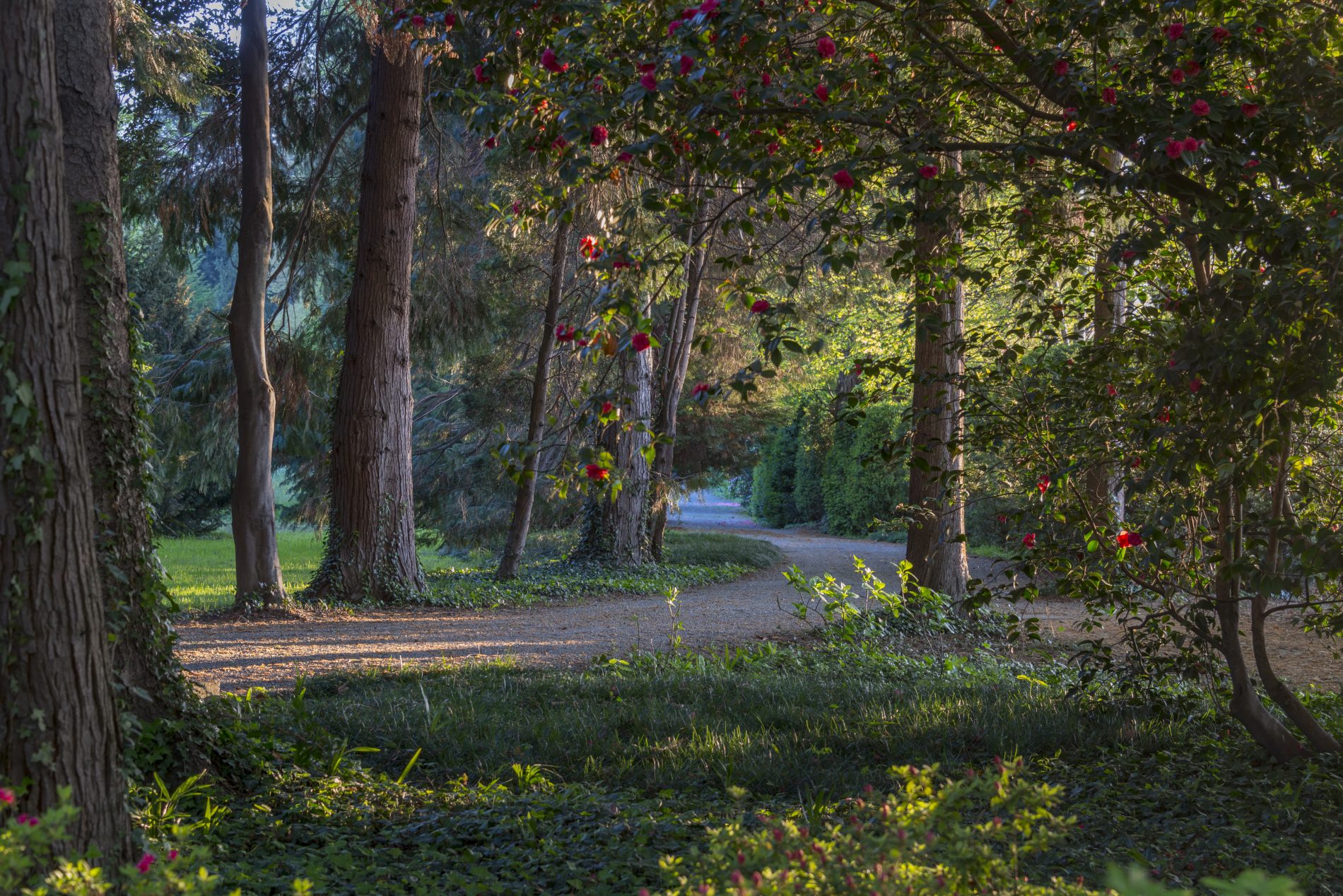The Boxwood
Boxwood, Buxus sempervirens, is an evergreen widely used in 18th and 19th-century gardens: it is often found in mazes and topiary creations. In ancient Rome, a topiarius was a garden decorator who created ornamental landscapes by pruning plants into geometric patterns or animal shapes. Elegant and with a severe appearance, the boxwood has crossed the history of noble estate parks. It has always been present in parterres, hedges, and trellises. Its name comes from the Latin buxus, which is the translation of the Greek pýknos, "dense, compact", referring to its very hard and smooth wood, lemon-yellow in color, used for making writing tablets, chess pieces, and wind instruments.
Historically, it has symbolized steadfastness and perseverance In ancient Greece, it was sacred to Hades, the protector of evergreens, and was a symbol of the perpetual rebirth of nature and, therefore, eternity. The very old specimens we see here date back at least to the first half of the 19th century: the long, wide, continuous boxwood hedge is a compositional element of the garden. It separates the avenue from quieter, more hidden areas and, at the same time, guides us in the discovery of the further reaches of the garden. The density of the branches and leaves prevented small animals from suddenly emerging and frightening the horses when carriages travelled along this avenue. Architect Paolo Pejrone speaks of it this way: "The Boxwood is now an endangered plant. The box tree moth, an insect native to Asia, has become its downfall here, as it has no natural antagonist. It arrives stealthily, lays its eggs, and in spring then the larvae start eating the leaves. We may have to start thinking about gardens without boxwoods. It is one of the signs of changing times that the garden perceives and suggests."

Boxwood, Buxus sempervirens, is an evergreen widely used in 18th and 19th-century gardens: it is often found in mazes and topiary creations. In ancient Rome, a topiarius was a garden decorator who created ornamental landscapes by pruning plants into geometric patterns or animal shapes. Elegant and with a severe appearance, the boxwood has crossed the history of noble estate parks. It has always been present in parterres, hedges, and trellises. Its name comes from the Latin buxus, which is the translation of the Greek pýknos, “dense, compact”, referring to its very hard and smooth wood, lemon-yellow in color, used for making writing tablets, chess pieces, and wind instruments.
Historically, it has symbolized steadfastness and perseverance In ancient Greece, it was sacred to Hades, the protector of evergreens, and was a symbol of the perpetual rebirth of nature and, therefore, eternity. The very old specimens we see here date back at least to the first half of the 19th century: the long, wide, continuous boxwood hedge is a compositional element of the garden. It separates the avenue from quieter, more hidden areas and, at the same time, guides us in the discovery of the further reaches of the garden. The density of the branches and leaves prevented small animals from suddenly emerging and frightening the horses when carriages travelled along this avenue. Architect Paolo Pejrone speaks of it this way: “The Boxwood is now an endangered plant. The box tree moth, an insect native to Asia, has become its downfall here, as it has no natural antagonist. It arrives stealthily, lays its eggs, and in spring then the larvae start eating the leaves. We may have to start thinking about gardens without boxwoods. It is one of the signs of changing times that the garden perceives and suggests.”
Audio
I punti di interesse
Ti trovi qui
